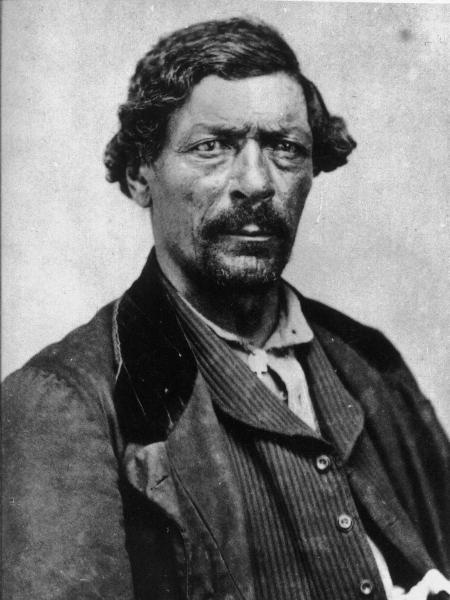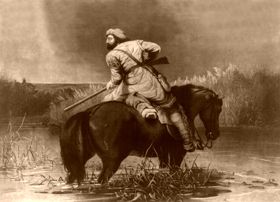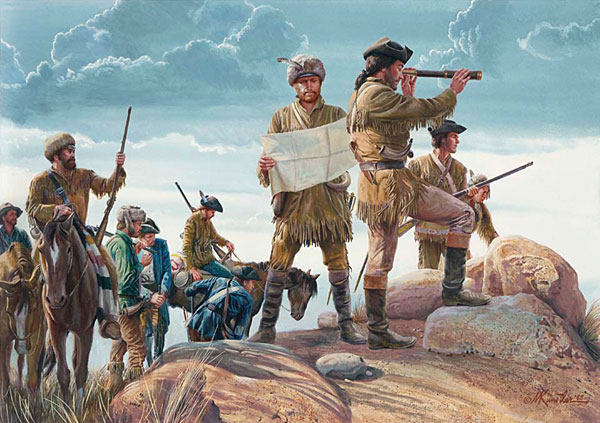Editors note: this is a continuing series. There are 5 installments remaining. Look for them every Tuesday.
It is estimated that there were only about 3,000 mountain men and trappers at the peak of the fur trade. Some would become legends in their own time, others would be recognized later. That some were anti-social outcasts from society only added to the myths, tall tales and downright prevarications that are part and parcel of “The Mountain Men”.

James Pierson Beckwourth was born a slave April 26, 1798 in Virginia. His mother was a slave owned by Sir Jennings Beckwith and young James was held as a slave. Jennings Beckwith moved his mixed race family to Missouri in 1809, placing James in school in St. Louis. Some time in this time period James changed his last name to Beckwourth. A deed of emancipation allowed James to be his own man and worked as a wrangler for Ashley’s Rocky Mountain Fur Company starting in 1824. Sometime in 1825 he went to live among the Crow Nation and over a period of time became a respected leader among the Crow. Continuing to trap, but due to a misunderstanding, Beckwourth started selling all the furs trapped by the Crow to John Astor’s “American Fur Company”. He left the American Fur Company in 1837 and by 1838 was trading with the Cheyenne along the South Platte River in Colorado. As an independent trader in 1840, he began trading on the “Old Spanish Trail” and by 1844 was trading as far as California. 1846 and Beckwourth is back in the United States working for the US Army; 1848 and it was back to California, in 1850 he would discover a low-elevation pass through the Sierra Nevada Mountains that would bear his name. He improved the trail, making it passable for wagons eliminating 150 miles of travel and avoiding the steep passes in the Central Sierra’s. Beckwourth would take up ranching in Sierra’s in1851, returning to Missouri and Colorado in 1859. He would become involved in the Sand Creek Massacre in1864; this prompted deep distrust of Beckwourth, he would die of an unstoppable nose bleed October 29, 1866 at age 68. (It is rumored that he was poisoned by the Crow as they felt they could no longer trust him.)

William Lewis Sublette was born September 21, 1798 in present day Lincoln County Kentucky. An adventurer and trapper, he and his brothers entered the fur trade. Sublette journeyed to the Rocky Mountains and openly competed with Hudson’s Bay Company, North West Company and the American fur Company. A new law passed in 1822 outlawed the sale or trade in liquor to the Native Americans. William Ashley took the decision in stride and started what later became called, the “Rendezvous” in which the trappers were re-supplied in the field by pack train. The gathered furs were packed and carried out by the returning packers thereby negating a need to return to St. Louis for the trappers. Sublette and his partners acquired Ashley’s fur company in 1826, and then sold to his brother and his partners at the Rendezvous of 1830. Wounded in the “Battle of Pierre’s Hole” in 1832, Sublette slowly sold off some assets to the American Fur Company and retired from the fur trade to St. Louis where he died in 1845 at the age of 47.

Related:

Joseph R. Walker was born December 13, 1798 in Roane County Tennessee and migrated with his family to Missouri in 1819. Detained for a short time by Spanish authorities in Santa Fe in 1820, he would work with “Old Bill” Williams on the Santa Fe Trail. Returning to Missouri in 1827, he was appointed sheriff of Jackson County, Missouri. While delivering horses to Oklahoma, he met Benjamin Bonneville in 1830. Bonneville offered him a position with his expeditions. Walker would join Bonneville’s 1832 expedition over South Pass to construct a fort on the Green River in present day Wyoming. Walker was appointed command of a group to explore the Great Salt Lake and find a route across or through the Sierra Nevada range to California. Leaving on July 27, 1833 they scouted, discovered and then followed an un-named river they called the “Barren River” across present day northern Nevada. (This river was thoroughly mapped by John Fremont and named for the German botanist Humboldt) They then followed a stream south along the base of the Sierras that eventually turned west into the Sierras. (This stream Fremont named for his scout “Kit Carson”) They probably crossed the Sierras via “Sonora Pass” and traveled down the Stanislaus River into Central California. Beginning their return trip February 14, 1834, Walker’s party crossed one of the lower passes in the southern Sierras; skirting the Sierras as they traveled north to the Humboldt River Sinks finally reversing their route to the Rocky Mountains the previous summer. Walker was hired to lead a wagon train to California late spring/early summer 1843. Leaving Ft. Hall on September 16 with scanty provisions, the train started for the Humboldt Sink while a small group was dispatched to find more rations and meet the train at the area of the sinks. When no relief party arrived, the train started south skirting the east slopes of the Sierras. The draft animals became so weakened due poor forage that the party was forced to abandon their wagons and walk across one of the lower passes, possibly Walker Pass in the southern Sierras. 1845 and Walker joins John Fremont’s 3rd expedition as head guide. Walker would lead the majority of the party and cross the Sierras near the Kern River while Fremont lead a small party over the Sierra Nevada range following the Truckee River. Walker began ranching in California but was persuaded to lead miners into the mountains of central Arizona. He would return to ranching in 1867, he would live there quietly until his death October 27, 1876 at age 77.